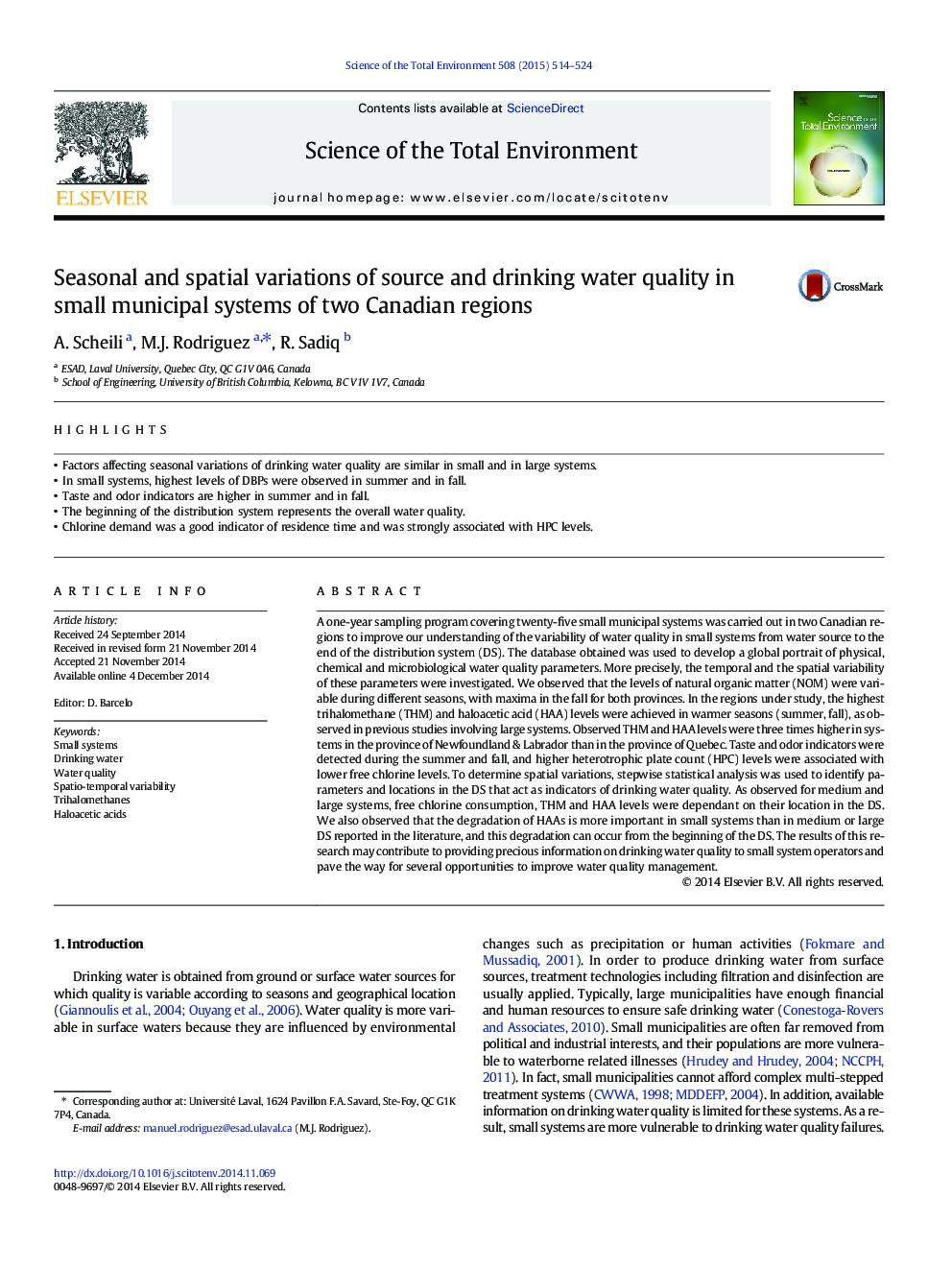| کد مقاله | کد نشریه | سال انتشار | مقاله انگلیسی | نسخه تمام متن |
|---|---|---|---|---|
| 6327945 | 1619768 | 2015 | 11 صفحه PDF | دانلود رایگان |
- Factors affecting seasonal variations of drinking water quality are similar in small and in large systems.
- In small systems, highest levels of DBPs were observed in summer and in fall.
- Taste and odor indicators are higher in summer and in fall.
- The beginning of the distribution system represents the overall water quality.
- Chlorine demand was a good indicator of residence time and was strongly associated with HPC levels.
A one-year sampling program covering twenty-five small municipal systems was carried out in two Canadian regions to improve our understanding of the variability of water quality in small systems from water source to the end of the distribution system (DS). The database obtained was used to develop a global portrait of physical, chemical and microbiological water quality parameters. More precisely, the temporal and the spatial variability of these parameters were investigated. We observed that the levels of natural organic matter (NOM) were variable during different seasons, with maxima in the fall for both provinces. In the regions under study, the highest trihalomethane (THM) and haloacetic acid (HAA) levels were achieved in warmer seasons (summer, fall), as observed in previous studies involving large systems. Observed THM and HAA levels were three times higher in systems in the province of Newfoundland & Labrador than in the province of Quebec. Taste and odor indicators were detected during the summer and fall, and higher heterotrophic plate count (HPC) levels were associated with lower free chlorine levels. To determine spatial variations, stepwise statistical analysis was used to identify parameters and locations in the DS that act as indicators of drinking water quality. As observed for medium and large systems, free chlorine consumption, THM and HAA levels were dependant on their location in the DS. We also observed that the degradation of HAAs is more important in small systems than in medium or large DS reported in the literature, and this degradation can occur from the beginning of the DS. The results of this research may contribute to providing precious information on drinking water quality to small system operators and pave the way for several opportunities to improve water quality management.
Journal: Science of The Total Environment - Volume 508, 1 March 2015, Pages 514-524
